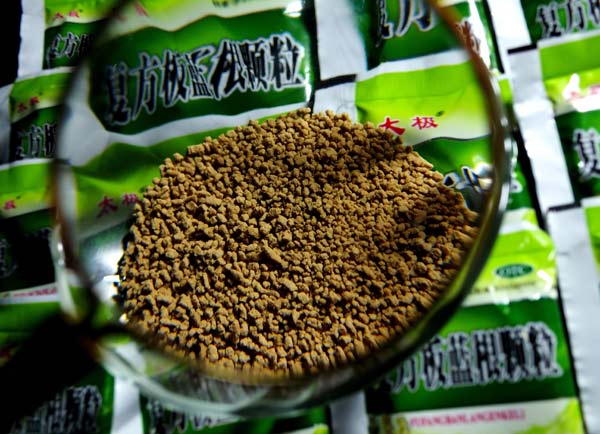TCM extends global reach with ISO standardization
- By Wu Jin
 0 Comment(s)
0 Comment(s) Print
Print E-mail China.org.cn, February 18, 2019
E-mail China.org.cn, February 18, 2019
Isatis root is a commonly used treatment in Traditional Chinese Medicine (TCM), taken to dispel pathogenic heat and relieve early symptoms of the common cold virus. The herbal remedy, typically sold in the form of dissolvable granules, may soon receive broader recognition worldwide, as the International Organization for Standardization (ISO) has deemed it a globally standardized medicine.

"The issuance of the ISO standards [for Isatis root] will promote wider understanding of TCM and guarantee knowledge about how it can be taken," said Wang Zhengtao, professor at the Shanghai University of Traditional Chinese Medicine (SHUTCM) and also the leading researcher of the standardized TCM program for the global market.
In December 2014, the research team initiated the program by submitting a proposal to the ISO entitled "TCM: The ingredients of Isatis root." After multiple question-and-answer sessions and voting, the program was officially launched in May 2016. With the concerted efforts of nominated experts from China, Germany, Canada, Australia, South Korea and Thailand, the standards for the herb were fleshed out before being published nearly three years later.
According to Wang, "Because the recognition of TCM varies in different countries, those of us who are familiar with the procedures to make the herbs have to explain them to experts of various nationalities at international conferences such as those held in Rome, Italy or South Korea."
The published ISO standards include the Isatis root's species, categories, definitions, technical requirements, quality testing protocol and the maximum permissible levels of pesticide residues and heavy metals.
The ISO-standardization of the herb signals China's proactive endeavor to bring TCM to the world.
"Goji berry, white peony root and dangshen (Codonopsis pilosula) are on agenda now," Wang said, adding that these upcoming ISO standards may be published by 2020.
In addition to medicinal treatments, SHUTCM is also applying for ISO recognition of TCM terminologies, facilities and clinical therapies, including acupuncture.
According to Wang, TCM in China should accelerate standardization, as it faces growing rivalry from South Korea and Japan to be the dominant emissaries of this centuries-old herbal culture.
Despite its leading role in TCM consumption and raw material supply, China has been impeded by disparities in technical, cultural, theoretical and legal resources from becoming the major country in terms of the global TCM trade.
Moreover, there is an emerging trend in the international community to attempt to "de-Chinese TCM," instead calling the practice Eastern Medicine or East Asian Medicine. This has been seen in the numerous ISO applications from South Korea, such as for electric acupuncture apparatus and intradermal needling.
So far, ISO has published approximately 35 standards for TCM, including pseudo ginseng, Ganoderma lucidum and Dendrobium officinale, and 41 additional applications are awaiting approval.






Go to Forum >>0 Comment(s)